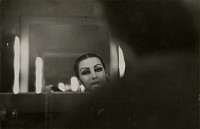BIOGRAPHY

1898-1971
Alexey Brodovitch was a photographer, designer, art director and teacher, who influenced generations of visual artists. He brought European avant-garde ideas of art and design to the forefront of American visual culture.
Brodovitch immigrated from Russia to Paris in the 1920s, which was then the center of the avant-garde. Though initially wanting to be an artist, he found work as a house painter and then as a scene painter for the Ballets Russes. Brodovitch began designing posters and working for art journals and design magazines, such as Cahier d'Art and Arts et MeÌtiers Graphiques. His work won awards and was included in important exhibitions. In 1930 he moved to Philadelphia to head the Advertising Design department for the Pennsylvania Museum School of Industrial Art. In 1934 Carmel Snow hired him as art director for Harper's Bazaar where he worked for 24 years and revolutionized magazine design. Brodovitch taught at the New School for Social Research from 1941–1959. Brodovitch created the magazine Portfolio with Frank Zachary in 1950.
Ballet was published in 1945 in a small run of 500 hundred copies with text by Edwin Danby, a poet, novelist and critic on dance. Edited and designed by Brodovitch, Ballet includes his innovative images from 1935-1937 of successive Ballets Russes companies, most likely in America. It is the only book of Brodovitch's own photography, yet it is emblematic of his innovation both in photography and design. His images are not of the pinnacle moments that come to characterize a specific ballet, but they evoke the mood and spirit of the medium of dance with images of the stage, from the wings, and backstage. Brodovitch's use of gesture, high contrast, and full bleeding images from one page to the next, create an expressive atmosphere and rhythm to the printed page.
Prints of Brodovitch's Ballet work are extremely rare as many were lost in a fire at his house in Pennsylvania in 1956. These early prints are very uncommon; most often when Ballet prints come on the market they were made at the time of the book, 1945, or later.
